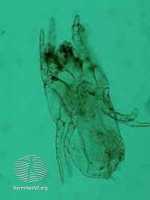
18 Oct Newly Recognized Trigger Mechanism of Atopic Dermatitis Identified
MedicalResearch.com Interview with:
Stephen J. Galli, MD
Mary Hewitt Loveless, MD Professor
Professor of Pathology and of Microbiology and Immunology
Department of Pathology
Stanford University School of Medicine
Center for Clinical Sciences Research
Stanford, CA and
Nicolas Gaudenzio PhD
Unité de Différenciation Epithéliale et Autoimmunité Rhumatoïde
INSERM, Université de Toulouse
Toulouse, France
MedicalResearch.com: What is the background for this study? What are the main findings?
Response: We took a lead from existing clinical data showing that patients with moderate to severe atopic dermatitis, an increasingly common disorder producing skin pathology, also have elevated levels of neuropeptides in their blood, particularly one neuropeptide, named “substance P”, whose level is correlated with disease severity. These patients also have high levels of mast cell-specific proteases in the blood, indicating that mast cells, which are innate immune cells present in the skin, and which can be activated when exposed to substance P, might play an essential role in modulating inflammatory and allergic processes.
Based on these observations, our teams (Galli Lab at Stanford University, USA and Gaudenzio Lab at Inserm Toulouse, France) decided to focus on the possible interactions between sensory neurons, which are a source of substance P, and mast cells. The results of this work have now been published in the journal Nature Immunology.
MedicalResearch.com: What should readers take away from your report?
Response: Using a mouse model of atopic dermatitis, we found that in skin showing signs of atopic dermatitis-like inflammatory reactions, mast cells and sensory neurons cluster together in “sensory neuroimmune units”. These sensory neuroimmune units are able to detect the presence of common allergens (e.g., house dust mites) and can release substance P, thereby triggering the development of skin inflammation leading to an atopic dermatitis-like disease.
MedicalResearch.com: What recommendations do you have for future research as a result of this study?
Response: Currently, patients can be treated with biological manipulations (biological therapy), but these are attempts to deal with the disease further down the line, after flare-ups have occurred. We believe that we have put our finger on a newly recognized trigger mechanism and now want to continue our research to identify new molecules that could block interactions between mast cells and sensory neurons. Such approaches might thus have a beneficial therapeutic effect for patients afflicted with atopic dermatitis and perhaps other disorders.
MedicalResearch.com: Is there anything else you would like to add? Any disclosures?
Response: Clearly, it will be important to assess the extent to which our findings in mice have relevance to humans.
We have no disclosures.
Citation:
Published: 07 October 2019
House dust mites activate nociceptor–mast cell clusters to drive type 2 skin inflammation
Nadine Serhan, Lilian Basso, Riccardo Sibilano, Camille Petitfils, James Meixiong, Chrystelle Bonnart, Laurent L. Reber, Thomas Marichal, Philipp Starkl, Nicolas Cenac, Xinzhong Dong, Mindy Tsai, Stephen J. Galli & Nicolas Gaudenzio
Nature Immunology (2019) |
The information on MedicalResearch.com is provided for educational purposes only, and is in no way intended to diagnose, cure, or treat any medical or other condition. Always seek the advice of your physician or other qualified health and ask your doctor any questions you may have regarding a medical condition. In addition to all other limitations and disclaimers in this agreement, service provider and its third party providers disclaim any liability or loss in connection with the content provided on this website.
Last Updated on October 18, 2019 by Marie Benz MD FAAD
